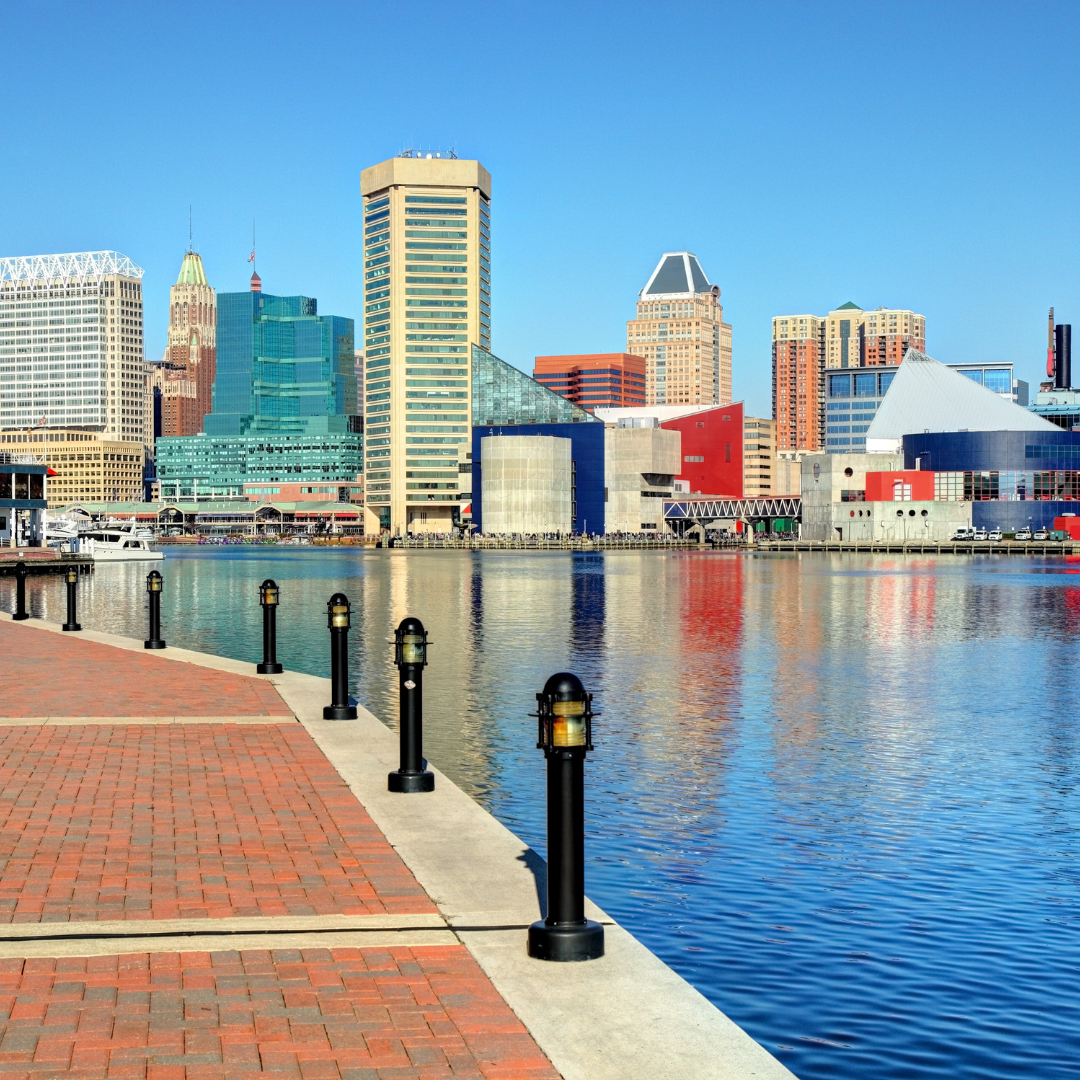The Biggest Changes to Baltimore, Maryland in the Last 10 Years

In the last ten years, Baltimore, Maryland, has gone through substantial change in many areas of urban development, social dynamics, and technological transformations. These sweeping transformations are a reflection of the resilience and adaptability of the city and are also providing a platform for the re-definition of the city's identity and for tackling some of the chronic problems. In this extensive analysis, we explore in depth with various sectors affected and feature some preeminent projects that have come to define the Baltimore of today.
Urban Development and Revitalization
Large-scale revitalization of neighborhoods and a reinvention of the downtown area have reportedly changed the face of Baltimore. At the center of this urban renaissance is Harbor Point, a game-changer in the city's economic landscape. It is a mixed-use project that combines office space, residential units, and active areas into one lively community. It has drawn in various business sectors, including some tech startup companies and established corporations, thus raising the bar for the local workforce and economy.
Furthermore, mixed-use development that promotes walkability and community participation now occupies pride of place in city priorities. The development of higher-density mixed-use has, to some extent, been inspired by nearby Montgomery County, such as Pike and Rose, which has become a bastion of seamlessly integrated residential living with commercial space. Such ongoing redevelopment programs in Baltimore not only aim to modernize the urban environment, but also set forth the goal of allowing local residents to delocalize themselves better within a great community.
Collaborative efforts with private developers, state agencies, and local stakeholders have led to some substantial projects being built in neighborhoods such as Fells Point and Old Goucher, and in the Westside. Efforts in historic preservation have been merged with these developments to ensure that the city's rich cultural legacy is preserved and combined with urban aesthetics. Some of the overall refurbishments stress on parks, better green spaces, and pedestrian pathways hence providing outdoor space for outdoor recreation to improve the residents' quality of life.
Investment in Infrastructure
The strategic investment in infrastructure has been the backbone of Baltimore's growth over the past decade. The city’s Department of Transportation has led many projects to modernize public transport and upgrade roadways, in a continuing effort to develop a safer and more integrated transportation process. In contrast to previous years when concentration focused on vehicles, there has been increased commitment toward sustainable means of travel, such as walking and cycling.
To help embody this vision, dedicated bike lanes popping up throughout the city not only encouraged cycling as a viable transport option but also healthy lifestyles. More improvements for pedestrians include widening sidewalks, improving crosswalks, and getting communities involved in transportation planning.
Improvements to the Light RailLink service have expanded its reach and frequency, making public transport a viable option for residents commuting to work or seeking leisure activities. The Charm City Circulator, an above-ground free bus service, also expanded its routes, further connecting neighborhoods with attractions.
Emerging Tech Hub
Over the last decade, Baltimore has redefined itself as a developing technological and innovation center, moving away from its historical reputation of a tech wasteland. The city's university system is key to a culture of imagination, entrepreneurship, and collaboration, attracting younger talent and thinkers, with Johns Hopkins University and the Maryland Institute College of Art among the most credited institutions.
One of the more exciting developments in recent years, however, has been the establishment of the new Baltimore Innovation District, offering a platform for startups and tech firms. Within this district, collaboration between like-minded founders, access to resources, mentorship, and funding for startups is an unrivaled commitment to nurture talent and innovation.
In addition, organizations like the Baltimore Blockchain Center have emerged, adding Baltimore's name to the map of the blockchain and fintech spaces. Universities, private enterprises, and government agencies have played a notable role in creating a dynamic environment capable of yielding growth in technology.
In addition, needs have arisen for partnerships with coding boot camps and tech training programs to fill these gaps in the communities, thus ensuring hiring residents into this new economy. This blend of support and locally accessible human resources makes Baltimore an attractive destination to attract tech talent and investment.
Social Dynamics and Public Policy Changes
In the wake of social justice movements, particularly the national and local unrest following the death of Freddie Gray in 2015, Baltimore has seen profound changes in its social dynamics. The city has confronted systemic issues head-on, prompting significant policy changes aimed at addressing long-standing challenges related to public safety, community relations, and social equity.
Efforts to reform police practices have gained momentum, with some local law enforcement agencies engaging in transparency initiatives, community policing programs, and de-escalation and cultural competency training. Some of the reforms are aimed at restoring public trust in the police, which is critical in a city ridden with deep-seated schisms.
Along with these police reforms, there has been an increased emphasis on affordable housing. The City, along with nonprofit organizations and community stakeholders, has instituted policies that aim to put people and equitable housing practices first. In tandem with its broader goals of revitalizing inner city neighborhoods, these policies intend to prevent long-term residents, in particular, from being pushed out and disruptive gentrification from destabilizing certain areas. The Baltimore Housing Trust Fund, set up to finance affordable housing development, further manifests the city's commitment to embracing fair solutions for benefiting its constituents.
Cultural Renaissance
Baltimore has fully embraced its rich cultural heritage, leading to a renaissance of the arts that permeates every facet of community life. The city acknowledges the intrinsic value of its artistic and cultural contributions, investing in public art installations, arts education programs, and preservation efforts in historic neighborhoods.
The Baltimore Book Festival, Preakness Stakes, and Artscape have become287 events occurring in the city known for showcasing artistic expressions that thrive in Baltimore. While these festivals celebrate the city's vibrant creative community, they also attract local and tourism patrons who contribute to Baltimore's economic stimulus.
Aside from that, the revival of cultural establishments such as theatres, galleries, and museums signifies Baltimore's repute as an arts-oriented city. Community art access initiatives, often in conjunction with local schools and indigenous organizations, are fostering creativity and inclusivity with a focus on presenting the relevance of arts in education and community engagement.
Public art ranging from murals to sculptures has provided vitality and accessibility to the neighborhoods and has turned Baltimore into an open-air gallery. This cultural rebirth is also helping residents restore a sense of pride and belonging, effectively re-establishing Baltimore as a welcoming and creative city.
Public Health Focus
Amidst the COVID-19 pandemic, public health in Baltimore received an urgent, renewed focus, highlighting existing inequities and challenging the systems that govern access to health services. The city initiated several programs intending to deepen healthcare, expand mental health resources, and improve community wellness.
In concert with health providers, local nonprofits, and community organizations, strategic partnerships emerged for outreach and support to vulnerable populations hardest hit by the pandemic. Priority has been given to health disparities, with an infusion of new funds for community-based health programming and public health educational campaigns from a community commitment to equitable health care for all residents.
Community wellness programs have emerged with initiatives focusing on nutrition, physical fitness, and mental health awareness. The introductions of community health centers have thus brought medicines closer to millions-those in need of preventive care and mental health resources-and the holistic approaches to well-being.
Simply put, public health in Baltimore is making a concerted effort to become a healthier and more equitable city. The pandemic's lessons have just reinforced the notion that community health matters and there is an urgent need for systemic shifts in the provision of health services.
Conclusion
In conclusion, Baltimore has experienced a decade of monumental change—from urban revitalization to development in technology and social policy, leading to its vibrant renaissance. These changes bear witness to the city's resilience and desire to establish a welcoming, innovative, and dynamic community for the benefit and pleasure of residents and visitors alike. Challenges still remain-from the socioeconomic environment to public safety issues-Baltimore is looking forward nonetheless, leveraging a unique history and cultural richness to grapple with future challenges. As the city looks forward, it creates a unique vision of progress to carry the backwater view reflecting the honor and aspiration of people collectively birthed in and around the city eventually aspiring to create a new glorious dawn of hope for every Baltimorean.
